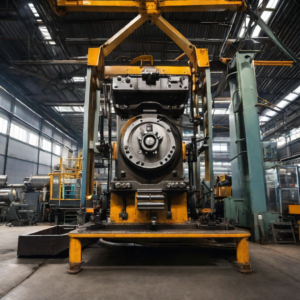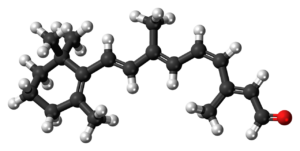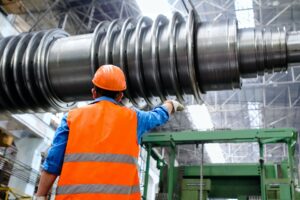Heat Exchangers: Mechanics, Thermodynamics, Efficiency, and Real-World Applications
Heat exchanger are ubiquitous in our daily lives, playing a crucial role in various industries and systems, from air conditioning and refrigeration to power plants and chemical processes. They are devices designed to transfer heat between two or more fluids, ensuring efficient energy utilization and temperature control. In this comprehensive article, we delve deep into the mechanics and thermodynamics of heat exchangers, exploring their fundamental principles, types, efficiency considerations, and real-world applications.
Introduction to Heat Exchangers
Heat exchangers are essential components in a wide range of applications, primarily focused on the efficient transfer of thermal energy from one fluid to another without mixing them. The underlying principle is based on the second law of thermodynamics, which states that heat naturally flows from a region of higher temperature to one of lower temperature.
The primary purposes of heat exchangers include:
- Temperature Control: Maintaining the desired temperature of a fluid or system.
- Energy Conservation: Recovering waste heat and reusing it to improve overall energy efficiency.
- Heat Recovery: Capturing and transferring heat from one process or fluid to another for various industrial applications.
- Phase Change: Facilitating phase changes, such as condensation or vaporization, in a controlled manner.
Fundamental Principles
1. Conservation of Energy
At the core of heat exchanger operation is the principle of conservation of energy. The total energy entering a heat exchanger must equal the total energy leaving it. This principle is expressed mathematically as:

Where:
- Q is the heat transfer rate.
- m1 and m2 are the mass flow rates of the fluids.
- C1 and C2 are the specific heat capacities of the fluids.
- Tin1 and Tin2 are the inlet temperatures of the hot and cold fluids, respectively.
- Tout1 and Tout2 are the outlet temperatures of the hot and cold fluids, respectively.
2. Heat Transfer Mechanisms
Heat exchangers facilitate heat transfer through three primary mechanisms:
- Conduction: Heat is transferred through direct contact between solid materials. In heat exchangers, this occurs in the walls or tubes separating the hot and cold fluids.
- Convection: Heat is transferred between a solid surface and a fluid (liquid or gas) flowing over it. This is the dominant mechanism in most heat exchangers.
- Radiation: Heat is emitted or absorbed in the form of electromagnetic waves. While this mechanism is less common in heat exchangers, it becomes significant at extremely high temperatures.
Types of Heat Exchangers
Heat exchangers come in various designs, each suited to specific applications and operating conditions. The choice of a particular type depends on factors such as fluid properties, temperature differences, and space constraints. Here are some common types of heat exchangers:
1. Shell and Tube Heat Exchangers
Shell and tube heat exchangers are one of the most widely used types, consisting of a cylindrical shell with multiple tubes running through it. The hot fluid flows inside the tubes, while the cold fluid surrounds them in the shell. This design allows for high heat transfer rates and is commonly found in power plants and chemical processes.
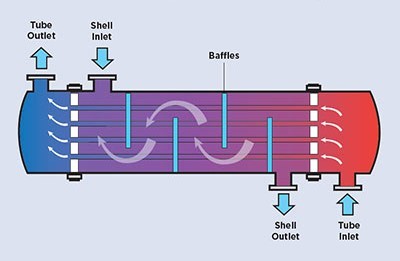
2. Plate Heat Exchangers
Plate heat exchangers use a series of thin plates with intricate patterns to create a large surface area for heat exchange. These are compact and efficient and are often used in HVAC systems, food processing, and automotive applications.
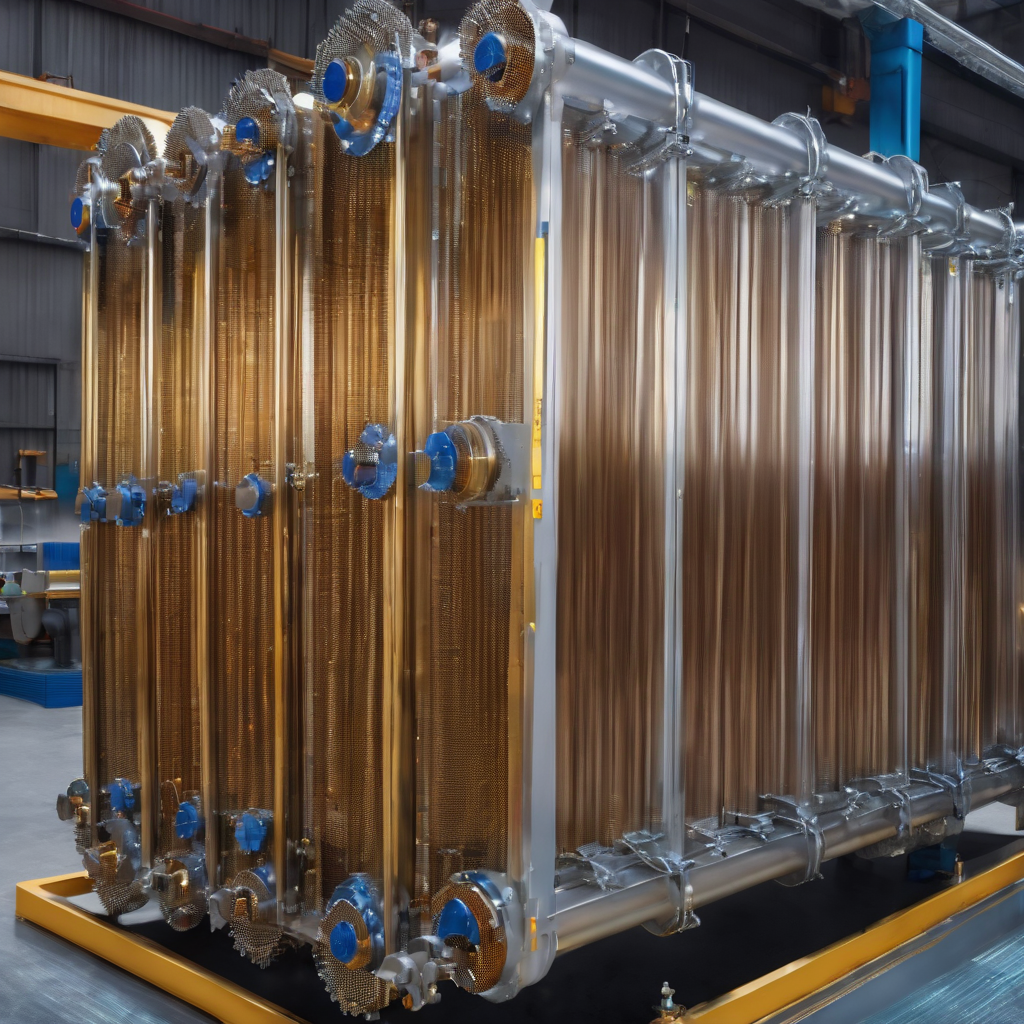
3. Finned Tube Heat Exchangers
Finned tube heat exchangers are an adaptation of the shell and tube design, with fins attached to the outside of the tubes to increase the heat transfer surface area. They are commonly employed in air conditioning and refrigeration systems.
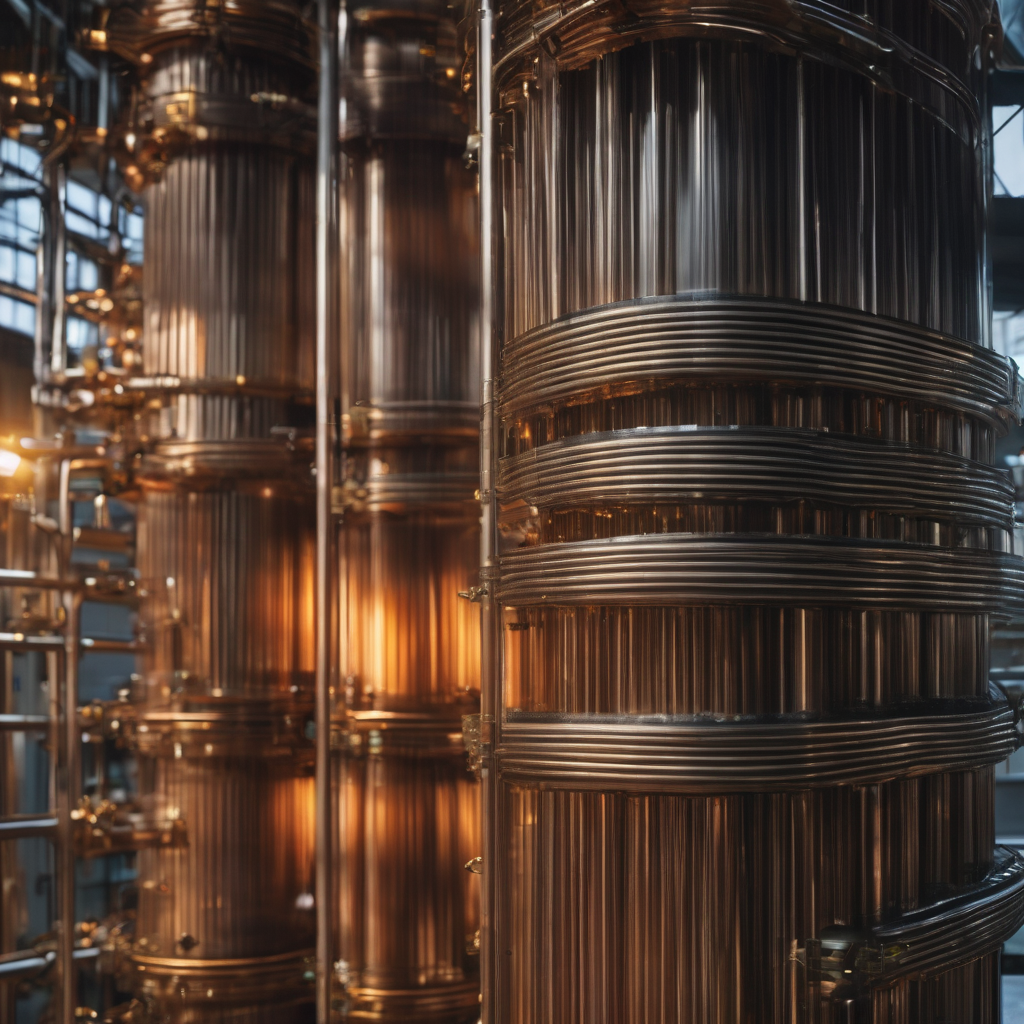
4. Double Pipe Heat Exchangers
Double pipe heat exchangers consist of two concentric pipes with one fluid flowing inside the inner pipe and the other in the annular space between the two pipes. They are simple in design and are used in small-scale applications or as secondary heat exchangers in larger systems.
5. Plate-Fin Heat Exchangers
Plate-fin heat exchangers use a series of stacked plates with alternating layers of fins to facilitate heat transfer. They are commonly used in aerospace applications, such as aircraft engines and oil coolers.
These are just a few examples of heat exchanger types, and each has its own advantages and limitations. The selection of a specific type depends on factors such as the required heat transfer rate, space constraints, cost considerations, and the properties of the fluids involved.
Efficiency Considerations
Efficiency is a critical factor in heat exchanger design and operation. It is essential to maximize the transfer of thermal energy while minimizing energy losses and pressure drops. Several factors influence the efficiency of a heat exchanger:
1. Temperature Difference (ΔT)
The temperature difference between the hot and cold fluids (ΔT) significantly affects heat exchanger performance. The greater the ΔT, the higher the rate of heat transfer. However, excessively high ΔT can lead to thermal stresses and reduced equipment lifespan.
2. Heat Transfer Surface Area (A)
The heat transfer surface area is a key factor in determining the efficiency of a heat exchanger. Increasing the surface area enhances heat transfer but also increases the cost and size of the exchanger. Engineers strive to strike a balance between surface area and efficiency.
3. Fluid Flow Rates
The mass flow rates of the hot and cold fluids (m1 and m2) impact heat exchanger efficiency. Higher flow rates can improve performance, but they also require more energy to pump the fluids through the exchanger.
4. Fluid Properties
The properties of the fluids involved, such as specific heat capacity and thermal conductivity, influence heat exchanger efficiency. Fluids with higher thermal conductivity transfer heat more effectively.
5. Fouling and Scaling
Over time, heat exchangers can accumulate deposits, known as fouling and scaling, on their surfaces. This reduces heat transfer efficiency and may necessitate maintenance or cleaning.
6. Counterflow vs. Parallel Flow
The arrangement of hot and cold fluid flows can significantly impact efficiency. In a counterflow heat exchanger, the hot and cold fluids flow in opposite directions, maximizing heat transfer. In a parallel flow exchanger, they flow in the same direction, which typically results in lower efficiency.
7. Heat Exchanger Effectiveness (ε)
The heat exchanger effectiveness (ε) is a measure of how effectively a heat exchanger transfers heat compared to the maximum possible heat transfer. It is defined as:

Where:
- Qactual is the actual heat transfer rate.
- Qmax is the maximum possible heat transfer rate.
Efficiency is closely related to ε, and engineers aim to maximize this parameter during heat exchanger design.
Real-World Applications
Heat exchangers find applications across various industries and systems. Here are some notable examples:
1. HVAC Systems
Heating, ventilation, and air conditioning (HVAC) systems in residential, commercial, and industrial buildings often rely on heat exchangers to regulate temperature. Plate and finned tube heat exchangers are common in these applications.
2. Refrigeration
Refrigeration systems use heat exchangers to remove heat from the refrigerant and maintain low temperatures. Plate heat exchangers are employed in many refrigeration units.
3. Power Plants
In power plants, such as nuclear, fossil fuel, or geothermal facilities, heat exchangers play a crucial role in generating electricity. They transfer heat from the working fluid to the water or air used to produce steam, which drives turbines.
4. Chemical Processing
Chemical plants use heat exchangers for various purposes, including heating, cooling, condensation, and vaporization. Shell and tube heat exchangers are prevalent in this industry.
5. Automotive Industry
Automobiles use heat exchangers for engine cooling and heating cabin air. Radiators and heat exchangers for transmission fluid are common examples.
6. Food and Beverage Processing
Food and beverage industries utilize heat exchangers for pasteurization, sterilization, and cooling of various products. Plate heat exchangers are often preferred for their sanitary design.
7. Aerospace
Aerospace applications, such as aircraft engines and spacecraft thermal control systems, rely on highly specialized heat exchangers, including plate-fin and tube-fin designs.
Challenges and Future Trends
While heat exchangers have come a long way in terms of efficiency and design, several challenges and future trends are worth noting:
1. Energy Efficiency
With an increasing emphasis on energy conservation and sustainability, there is a growing need for even more efficient heat exchangers. Advances in materials and design are crucial in achieving this goal.
2. Miniaturization
As technology continues to shrink, there is a demand for miniaturized heat exchangers suitable for microelectronics and small-scale applications.
3. Heat Exchanger Networks
The design of heat exchanger networks, where multiple heat exchangers work together to optimize energy usage, is becoming more sophisticated and important in industrial processes.
4. Advanced Materials
Research into novel materials with improved thermal conductivity and resistance to fouling and scaling can lead to more durable and efficient heat exchangers.
5. Waste Heat Recovery
Efforts to capture and reuse waste heat from industrial processes and power generation are gaining momentum, driving innovation in heat exchanger technology.
Conclusion
Heat exchangers are engineering marvels that enable efficient heat transfer between fluids in various applications. Understanding the fundamental principles of thermodynamics and mechanics that underlie their operation is crucial for designing and optimizing these devices.
As technology continues to advance, heat exchangers will play an increasingly vital role in conserving energy, reducing environmental impact, and improving the efficiency of countless processes across industries. With ongoing research and innovation, the future of heat exchangers promises even greater efficiency, durability, and versatility.

